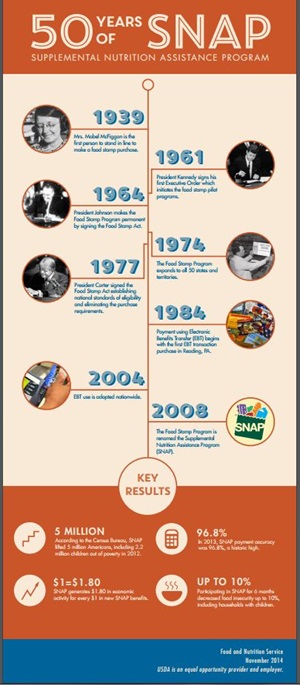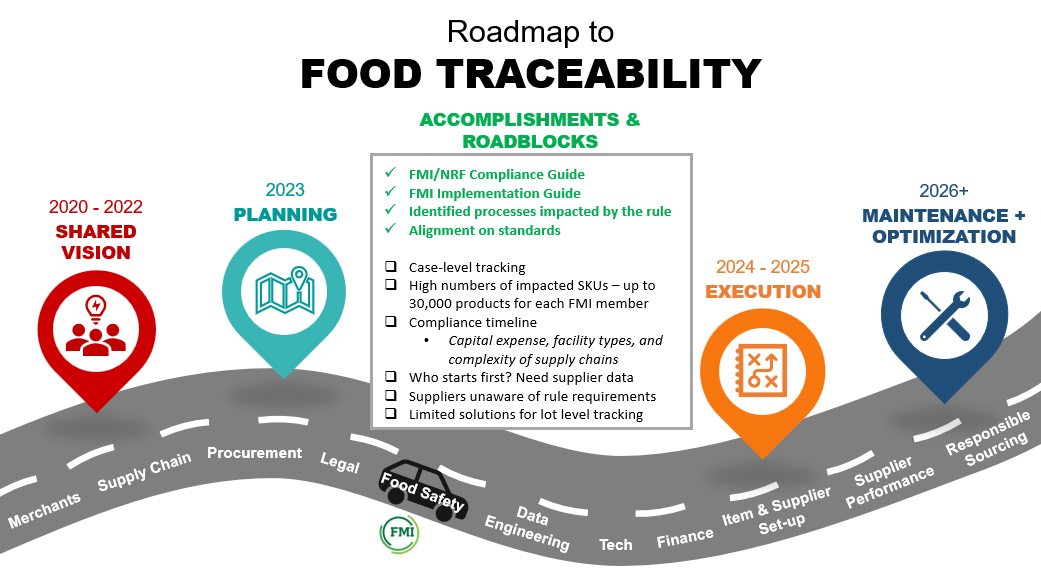By: Hannah Walker, Senior Director, Technology & Nutrition Policy, Food Marketing Institute

On September 15, 2016, USDA’s Food and Nutrition Service (FNS) released the Supplemental Nutrition Assistance Program (SNAP) online shopping pilot Request for Volunteers (RFV). The online shopping pilot is designed to explore the feasibility of using SNAP benefits to shop and pay for groceries online.
Earlier this fall, USDA’s Andrea Gold spoke with FMI members at the State Issues Retreat, addressing numerous agency updates with a particular focus on the online SNAP redemption pilot program. The 2014 Farm Bill directed FNS to conduct an online SNAP redemption pilot as a way to better serve all SNAP customers and reflect the evolving U.S. grocery shopping habits. FMI has worked with the agency over the past two years to identify the challenges and opportunities of online SNAP redemption.
Retailers interested in participating should review the contents of the RFV carefully to ensure that all eligibility requirements can be met. FNS expects up to five retailers in up to three states will be selected for this pilot. In order for a retailer to participate, they will need to have both a processor and state willing to participate and have an existing on-line program of some type. Interested retailers can access the RFV and the application here.
Below is the statement from USDA disclosing more detailed information.
USDA Seeks Retailer Volunteers for SNAP Online Purchasing Pilot
WASHINGTON, Sept. 15, 2016 ¾ The U.S. Department of Agriculture (USDA) is seeking retailer volunteers for a two year, nationwide pilot to enable Supplemental Nutrition Assistance Program (SNAP) participants to purchase their groceries online. The 2014 Farm Bill mandated a pilot be conducted to test the possibility of allowing retail food stores to accept SNAP benefits through online transactions. Up to five retailers in three states will be selected for this pilot and, once selected, the pilot is slated to begin next summer after the EBT processor completes system development work to allow for online transactions.
“Online purchasing shows great promise to improve access to healthy food for SNAP participants living in neighborhoods and rural or tribal areas without grocery stores,” said Agriculture Secretary Tom Vilsack. “Online purchasing will also help those who are unable to access a grocery store due to a disability or lack of transportation.”
Since the passage of the Farm Bill, USDA has been working to lay the groundwork to put together the complex technical infrastructure required for this pilot. Online payment presents technical and security issues that will be tested in this controlled, limited way prior to nationwide expansion. USDA is committed to maintaining the security of SNAP benefits for both the protection of SNAP participant accounts and to prevent and detect trafficking, so SNAP online purchases must have a higher level of security than most other online purchases.
“Ensuring the security of SNAP’s taxpayer-funded benefits is paramount as we look toward expanding access through the online marketplace. We will continue to work closely with our state and EBT processing partners on this pilot so that we can bring this option to SNAP households in an efficient and secure manner,” Vilsack said.
For households to make online purchases, the pilot requires retailer volunteers to provide service that is secure, private, and easy to use. As with all SNAP purchases, customers participating in the online pilot will only be able to use their SNAP benefits for eligible food purchases – not to cover any related charges, such as delivery or service fees. Retailers interested in participating should consult the online purchasing pilot Request for Volunteers Application Package available for download from the FNS public website.
USDA has taken many steps in the last several years to strengthen SNAP and increase access to healthy foods. Recently FNS announced a purchase and delivery pilot, which is designed for non-profits and government entities to improve access to groceries solely for homebound elderly and disabled SNAP participants. USDA also provided funding to incentivize participants in SNAP to purchase more healthy fruits and vegetables through the Food Insecurity Nutrition Incentive Program, increased farmers market participation in SNAP to improve access to fresh and nutritious food, and proposed updated SNAP retailer standards to include different varieties of healthy qualifying foods.
As the nation's first line of defense against hunger, SNAP helps put food on the table for millions of low income families and individuals every month and is critical in the fight against hunger. SNAP is a vital supplement to the monthly food budgets of 44 million low-income individuals. SNAP plays an important role in reducing both poverty and food insecurity in the United States—especially among children. SNAP is an effective and efficient health intervention for low-income families with a positive impact on children beginning before birth and lasting beyond childhood years, improving health, education, and economic outcomes.
USDA's Food and Nutrition Service administers 15 nutrition assistance programs. In addition to SNAP, these programs include the Special Supplemental Nutrition Program for Women, Infants and Children, the National School Lunch Program, and the Summer Food Service Program which together comprise America's nutrition safety net. For more information, visit www.fns.usda.gov.
###
USDA is an equal opportunity provider and employer. To file a complaint of discrimination, write to USDA, Assistant Secretary for Civil Rights, Office of the Assistant Secretary for Civil Rights, 1400 Independence Avenue, S.W., Stop 9410, Washington, DC 20250-9410, or call toll-free at (866) 632-9992 (English) or (800) 877-8339 (TDD) or (866) 377-8642 (English Federal-relay) or (800) 845-6136 (Spanish Federal-relay)
###


 Industry Topics address your specific area of expertise with resources, reports, events and more.
Industry Topics address your specific area of expertise with resources, reports, events and more.
 Our Research covers consumer behavior and retail operation benchmarks so you can make informed business decisions.
Our Research covers consumer behavior and retail operation benchmarks so you can make informed business decisions.
 Events and Education including online and in-person help you advance your food retail career.
Events and Education including online and in-person help you advance your food retail career.
 Food Safety training, resources and guidance that help you create a company food safety culture.
Food Safety training, resources and guidance that help you create a company food safety culture.
 Government Affairs work — federal and state — on the latest food industry policy, regulatory and legislative issues.
Government Affairs work — federal and state — on the latest food industry policy, regulatory and legislative issues.
 Get Involved. From industry awards to newsletters and committees, these resources help you take advantage of your membership.
Get Involved. From industry awards to newsletters and committees, these resources help you take advantage of your membership.
 Best practices, guidance documents, infographics, signage and more for the food industry on the COVID-19 pandemic.
Best practices, guidance documents, infographics, signage and more for the food industry on the COVID-19 pandemic.
